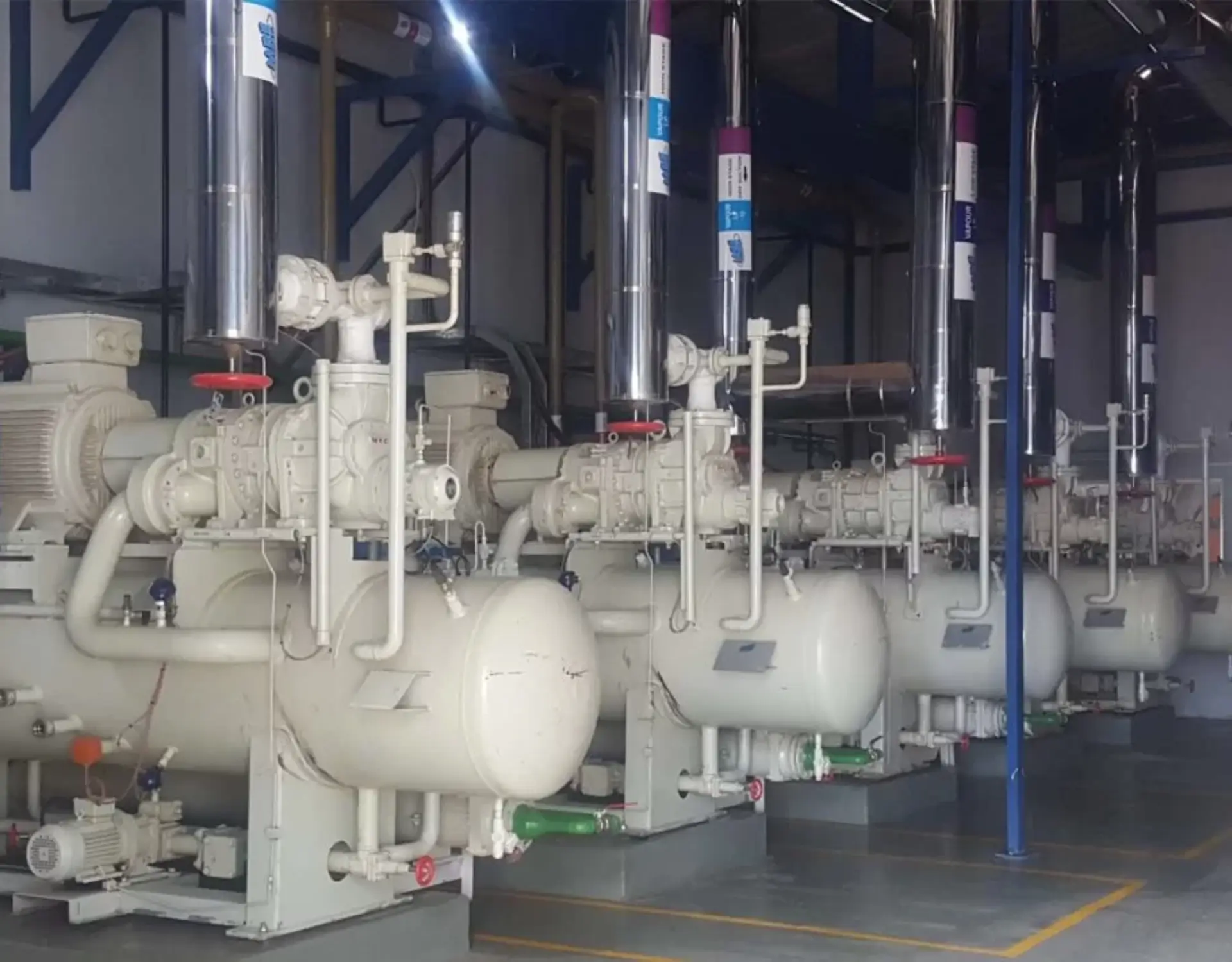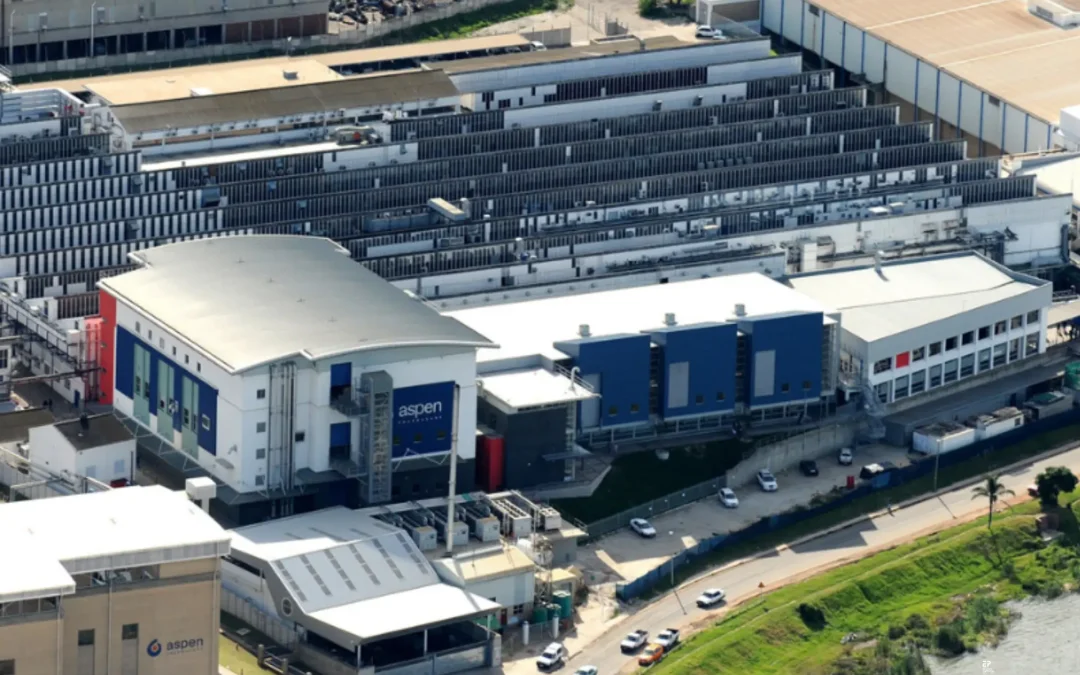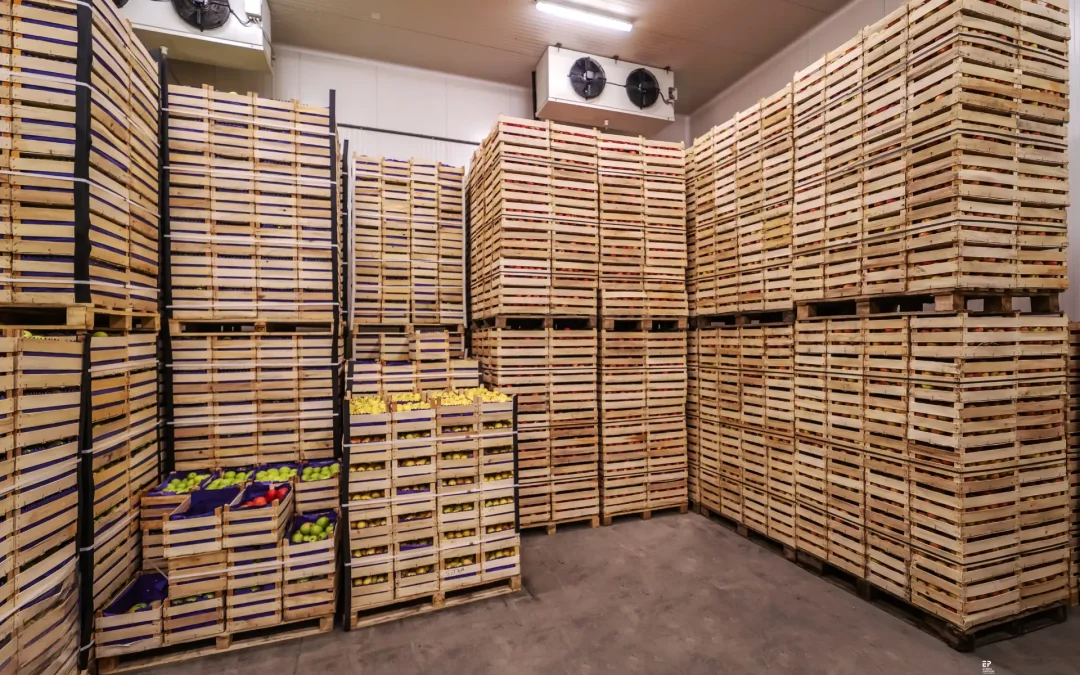When it comes to refrigeration, the requirements of Meyerton-based pork products supplier, Lynca Meats, are as demanding as they get. The sprawling facility consists of 28 temperature-regulated rooms for the production of a host of processed pork products; an abattoir that markets carcasses, boxed meat and offal; and dedicated units that offer multi-principle cold storage warehousing and logistical solutions to clients.
The temperature requirements for the facility range from -25⁰C to 5⁰C, and each room has its own specified cooling shift, which range between 2.5 to 24 hours. This means that each room’s coolers need to be controlled separately.
As Dawie Kriel, Head of EP Refrigeration – a division of Energy Partners and part of the PSG group of companies – explains, achieving this with the Lynca Meats’ existing 20+ year-old refrigeration system, was fast becoming untenable in terms of cost, as well as reliability.
“The old system had extremely high energy requirements, and with the cost of electricity having increased by above-inflation levels over recent years, this was already a significant challenge to keeping operating costs down. The system maintenance had also become quite challenging, with maintenance costs rapidly mounting, while the facility experienced frequent periods of downtime that affected production and caused stock losses. An upgrade was therefore a matter of urgency.”
Outsourcing refrigeration
Lynca Meats CEO, Brent Fairlie, acknowledged that this necessary upgrade posed the ideal opportunity for an outsourced refrigeration model to be introduced. “Managing the refrigeration requirements of a facility of this scale had become increasingly time-intensive, requiring specialised knowledge. We realised that handing this managerial responsibility over to outsourced specialists would therefore be in the best interest of the business, as it would allow us to focus solely on the company’s core activities.”
EP Refrigeration subsequently offered the upgrade under the EP Cooling Sales Model on a ten-year contract. The entire system would be installed at no capital cost to the client, and EP Refrigeration would maintain the system and sell refrigeration as a utility to Lynca Meats, who would reserve the right to buy the system on residual value at any point in time.
This essentially means that Lynca Meats would receive a guarantee in terms of the cost of refrigeration for a set period, and the responsibility of maintenance and operation would fall on EP Refrigeration for the duration of the contract.
“We operate on a tariff structure that is similar to most other utilities. This includes an availability charge and a maintenance fee that make up the set monthly cost for the service. Along with that, there is also the variable charge for refrigeration, which is measured in “kilowatt-hours refrigeration (kWhR),” explains Kriel.
To accurately quantify and measure refrigeration, and to bill the client correctly, EP Refrigeration pioneered a cost-effective refrigeration meter to ensure accurate readings. In effect, these meters primarily measure temperature and pressure, from which the used refrigeration units is calculated. This data is also made available to Lynca Meats, to be used for operational or management decisions down the line.
The solution
With the existing system comprising over 50 simplex cooling systems, the complete upgrade of Lynca Meats’ facility started by replacing these units with two medium temperature multiplex refrigeration plants (plants A and B), as well as one Evapco ATC 199B evaporative condenser with two circuits. For this project it was important to select a unit with a condensing temperature of 35⁰C and air volume control to regulate the heat rejection rate.
Each multiplex plant is composed of three Bitzer 6HE-28.2Y-40P semi-hermetic compressors, each with a 227 kWR capacity. The compressors are positioned on one receiver base and their total capacity is controlled via a CR II system with suction pressure transducer control on the lead compressor.
Each of the rooms connected to plants A and B were then outfitted with two HC Evaporator coolers, with capacities ranging from 7kWR to 30kWR, depending on their specific requirements. However, there were a handful of exceptions since it was found that the existing coolers in a few of the rooms could be integrated into the new system (which saved some costs).
With an evaporation temperature of -7⁰, plants A and B supply refrigeration to all of the rooms, except for five rooms that demanded a more heavy-duty solution.
For rooms 3, 6 and 8 (which included the blast freezers), a multiplex refrigeration plant (plant C) was installed which consists of three Bitzer 6FE-44Y-40P semi-hermetic compressors with a total capacity of 100.5 kWR and an evaporation temperature of -32⁰C. This would provide lower temperatures of up to -25⁰C for the blast chillers.
In addition, rooms 9 and 10 would be connected via a satellite Bitzer 4JE-15Y-40P compressor with a capacity of 31.5 kWR, positioned on the same receiver base.
Again, HC Evaporator coolers were installed in each of the five rooms on plant C’s circuit, with capacities ranging from 8.5 kWR to 23 kWR. Each of the coolers in all 28 of the facility’s rooms are individually controlled via an eLumac Refrigeration Evaporator Controller, as well as Danfoss electronic expansion valves and supply air, return-air, evaporating and suction temperature sensors.
One interesting advantage with this project, notes Kriel, was that the client already had a borehole on site that was primarily being used to clean floors and other components. “This meant that the evaporative condensers that we specified for the site could be made to run even more cost-effectively, since the borehole negates the need for potable water. The only additional requirement was a water side stream filtration unit, which was provided by Water Upington. This was a crucial addition to remove any dissolved minerals that may have shortened the life span of the evaporative condensing unit.”
Uninterrupted refrigeration
One of the biggest challenges of this project, according to Kriel, was ensuring that no further production and stock losses would be incurred. “We needed to complete the installation while the facility remained 100% operational, and as far as possible, we would have to work around existing equipment.”
The team decided that the best way forward would be to plan the installation in each individual area around the client’s production schedules and to determine for how long each section of the facility could be cordoned off to decommission old components and install new ones.
“For the most part, our team could only install new coils over weekends and in the evenings, and connect them to their respective refrigeration plants one at a time. While this was taking place, we would also decommission the old system step-by-step as each room was upgraded. In the end, the success of this hinged on very close interaction and coordination with the client,” Kriel explains.
Having started in January of 2019, work on the plant officially concluded in the first week of April, without any operational disruptions having been experienced by Lynca Meats over the working period. The newly installed system is performing as predicted and has achieved a 30% reduction in the cost of refrigeration for the client. In addition to this, with the client no longer having to be responsible for managing and maintaining the system under the outsourced contract, Lynca Meats is also saving countless man-hours.
The success of this project not only showcases what can be achieved with a state-of-the-art refrigeration system, but also serves as a case study for the benefits of outsourced refrigeration.





